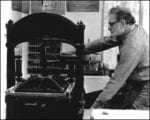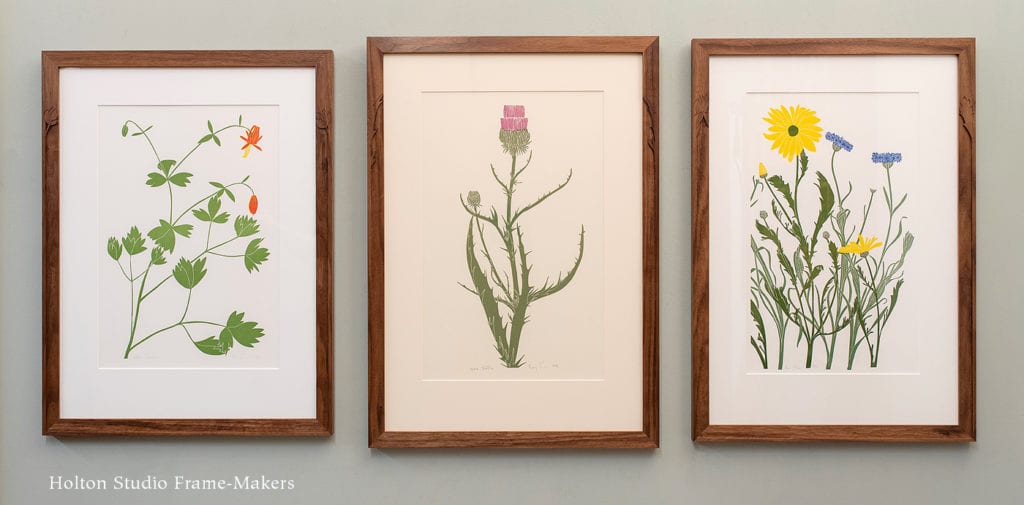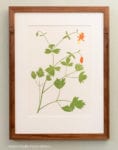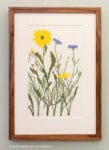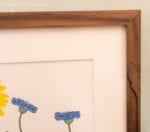When I worked at Storey Framing—way back in the ’70’s and ’80’s—an older gentlemen would often come in with his wife, bringing us his botanical linoleum block prints he made and sold here in town.
His name was Henry Evans, and I think it’s fair to say that his images, of some 1400 subjects, became part of the enduring iconography of Berkeley, tapping into that deep strain of affection for nature and simplicity so characteristic of the city. I have one family member, in fact, who has at least a couple dozen Evans prints hanging in her living room! But no great achievement remains strictly local, and the range of influence of Evans’s work is evident in the impressive fact that in his career, he had more than 250 one-man shows, distributed across nearly every state in the union as well as several international venues.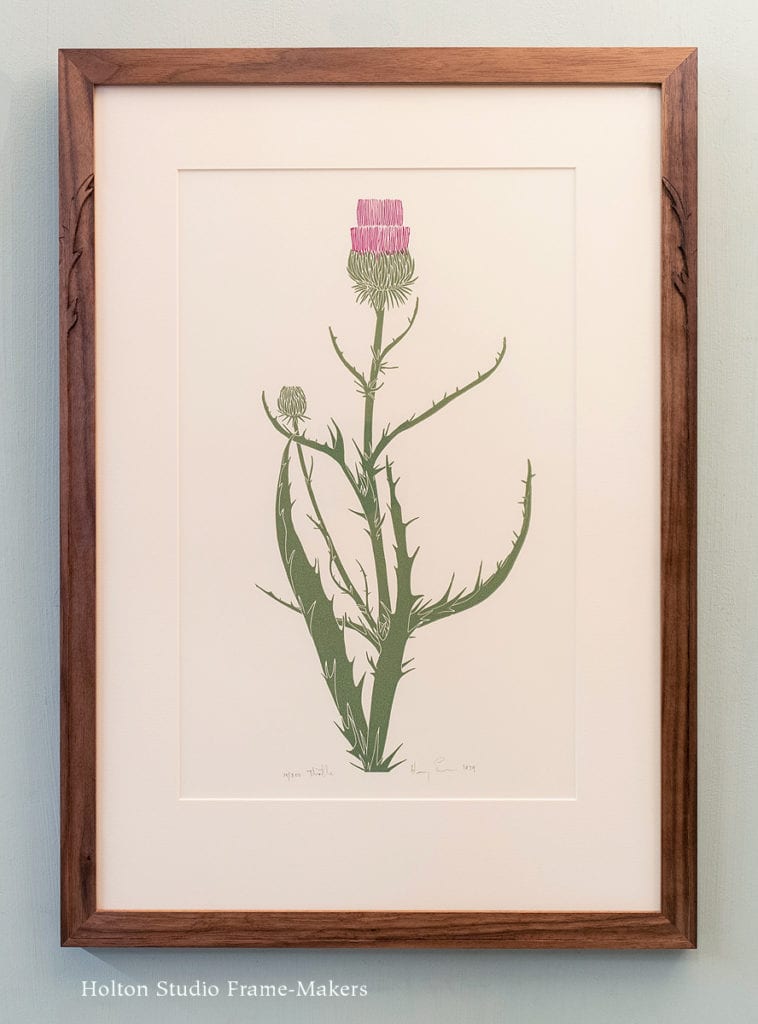
This lovely print, “Thistle,” on the artist’s typical 13″ x 20″ paper, was one of three (the whole set’s shown at the bottom of the post) that we framed for some folks who escaped the Paradise fire last fall but, sadly, lost their home and all their possessions, including several Evans prints. Of course they can never replace all the meaning the prints they’d lived with for so long held for them, but I hope these three new pieces, as examples of Evans’s honest and direct depiction of life’s ever-resurgent beauty, might mean more in other ways.
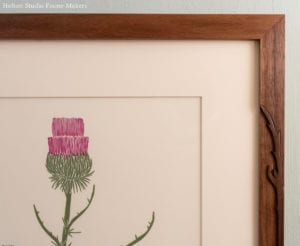 The 1″ frame is carved walnut, simply oiled, not stained. I used a composition I’ve developed recently (this William Rice print is one example) in which the bottom profile is a simple carved flat with a raised outer strap, that profile continuing up the sides until near the top, where a simple relief design “grows” in from the raised outer strap and toward the image. The carved pattern is drawn from, and celebrates, the forms in the block print. But I also really love how they are carved identically to the blocks used to create such prints, the frame thus becoming a tribute to the art form as well as the work of art—and a nod to the natural unity of the arts. Above the decorative pattern there is no carving, and the whole molding is a simple uncarved flat. The extra thickness of the top makes it feel a bit like it’s sheltering the picture—just what a frame should do.
The 1″ frame is carved walnut, simply oiled, not stained. I used a composition I’ve developed recently (this William Rice print is one example) in which the bottom profile is a simple carved flat with a raised outer strap, that profile continuing up the sides until near the top, where a simple relief design “grows” in from the raised outer strap and toward the image. The carved pattern is drawn from, and celebrates, the forms in the block print. But I also really love how they are carved identically to the blocks used to create such prints, the frame thus becoming a tribute to the art form as well as the work of art—and a nod to the natural unity of the arts. Above the decorative pattern there is no carving, and the whole molding is a simple uncarved flat. The extra thickness of the top makes it feel a bit like it’s sheltering the picture—just what a frame should do.
Henry Evans’s wife, Marsha, who was so instrumental in the artist’s career, has a website offering prints for sale at HenryEvans.com. While visiting the site, don’t miss the charming 1969 video of Evans, which captures his wise and profound understanding of the role and significance of pictures. Among the thoughts worth remembering is this one: “The artist has to be concerned with beauty… If he’s opposed to ugliness, then he shouldn’t propagate it and reproduce it.”
See our Henry Evans prints here.
The whole set of three Evans prints we framed for this customer—
Gallery of details—
- Henry Evans, “Columbine”
- “Columbine” frame detail
- Henry Evans, “Daisies and Cornflowers”
- “Daisies and Cornflowers” detail
